How To Master The Barbell Squat
The back squat is a big move with big benefits, but before you start shifting big weight make sure you’re ready with our comprehensive form guide
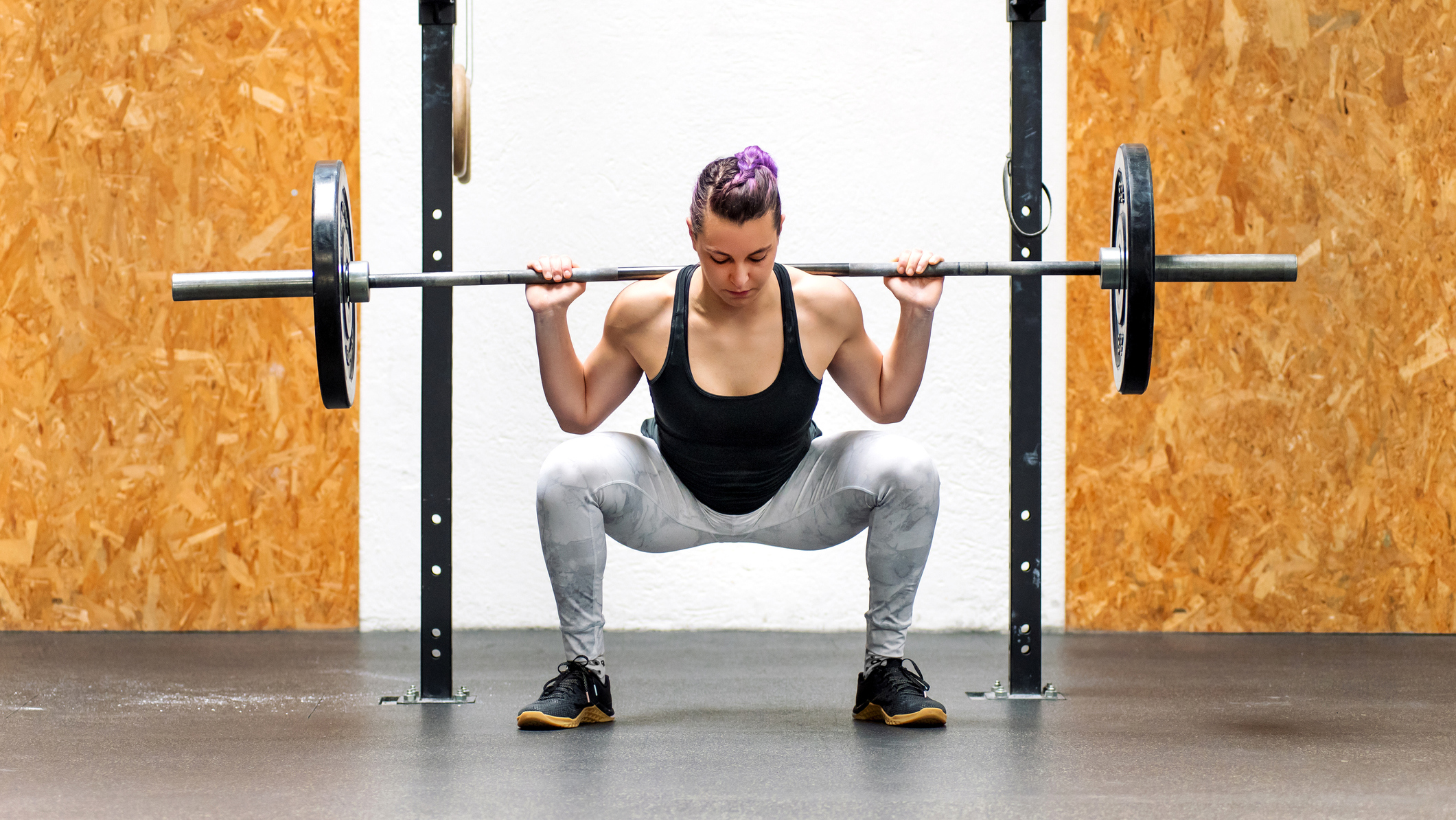
Everybody squats (or should squat). It’s one of the best leg exercises you can do, and the benefits extend beyond the legs. Once you graduate to the barbell squat, it becomes a full-body exercise, with your core and back muscles working to keep your body in the right position.
As a result of its many benefits, you’ll find barbell back squats on the training plan of pretty much anyone who uses weights. Bodybuilders and powerlifters, of course, but all sorts of athletes use the move to boost their strength and power and build muscle—and it should be a workout staple even if you only visit the gym once or twice a week during your lunch hour.
The squat is a compound exercise that primarily works the quads, hamstrings and glutes, while also strengthening the joints, ligaments and tendons around the knee and hips. Aside from working those muscle groups, the back squat also requires ankle stability in order to drive through the heels, core stability to maintain the weight you lift, and impressive shoulder mobility and trap activation to keep the barbell under control.
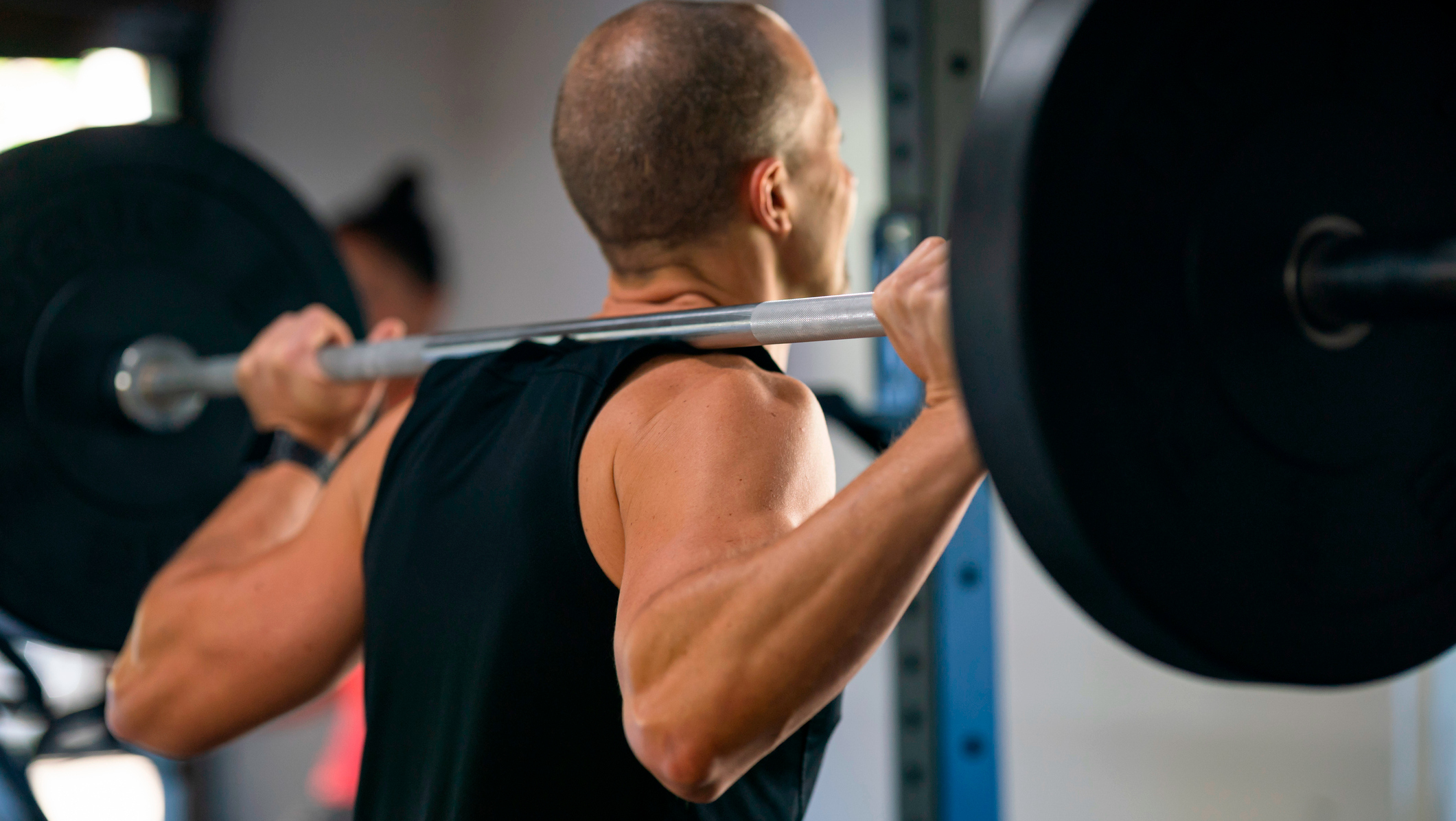
It can be a daunting move to tackle for those new to the gym, and if you’re a beginner, ensure you’ve got the movement pattern and range of motion nailed by first incorporating unweighted squats into your workouts. Then and only then should you progress to weighted variations.
How To Build Up To The Barbell Squat
Practice by performing the unweighted squat. Keep your core tight and place your feet shoulder-width apart, toes pointing outward slightly. Slowly lower your body until your quads are parallel to the floor (or even a little lower), keeping your chest up and back straight. To get enough practice, try our 30-day squat challenge.
When you can comfortably perform multiple sets of 15-20 reps you can progress to goblet squats, where you hold a kettlebell or dumbbell with both hands in front of your chest as you perform the move. This adds further resistance and helps you keep your back straight. When you’re happy with your performance here, progress to adding a barbell.
How To Do The Barbell Squat
Take the bar out of the rack with it resting on your rear shoulder muscles. Take two big steps back and stand with your feet roughly shoulder-width apart, toes pointing slightly out. Keep your spine in alignment by looking at a spot on the floor about two meters in front of you, then “sit” back and down as if you’re aiming for a chair. Descend until your hip crease is below your knee. Keep your weight on your heels as you drive back up.
Sign up for workout ideas, training advice, reviews of the latest gear and more.
Back Squat Form Tips
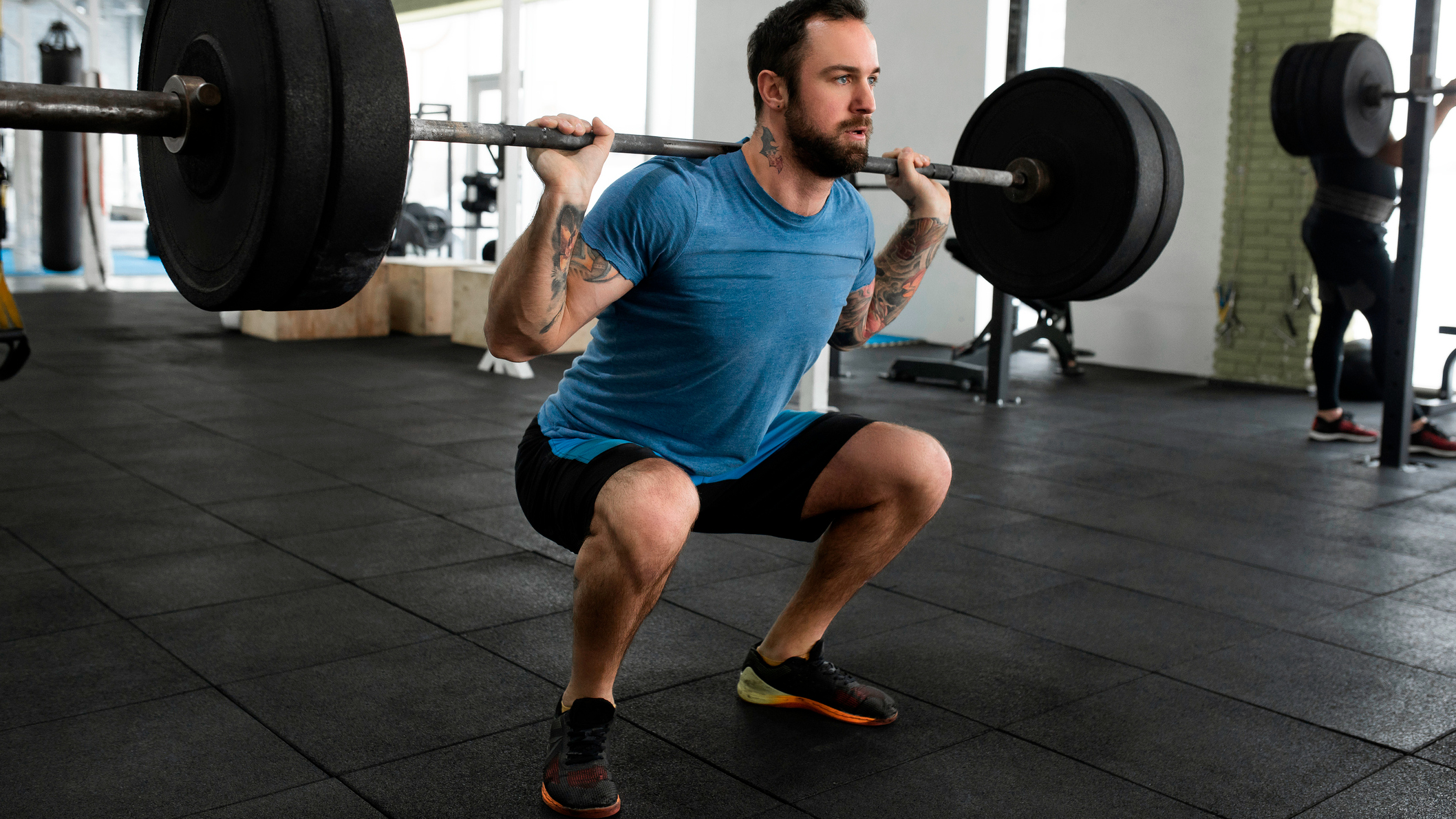
1. Don’t drop your chin
Before you lower into the back squat, pick a point on the wall in front of you and focus on it. Keep looking at that point as you lower and then drive back up. This will help you avoid dropping your chin towards your chest, which encourages unhelpful movement in your upper spine that will cause you to hunch forwards and make it more difficult to complete the lift once you fatigue towards the end of the set. You might also want to avoid staring yourself out in the mirror because that can be distracting.
2. Get your chest up
If you want to lift as much weight as possible and reduce your risk of injury, keep your chest up throughout the move. If you drop your chest, your spine will flex (bend forwards) and that’s not a great thing when you have a heavy load on your back. One thing that will help you keep your chest in the right place is taking a deep breath before you lift and holding the air in your lungs as you lower. Once you begin to rise from the bottom position and are in control of the lift, you can exhale as you return to the start position.
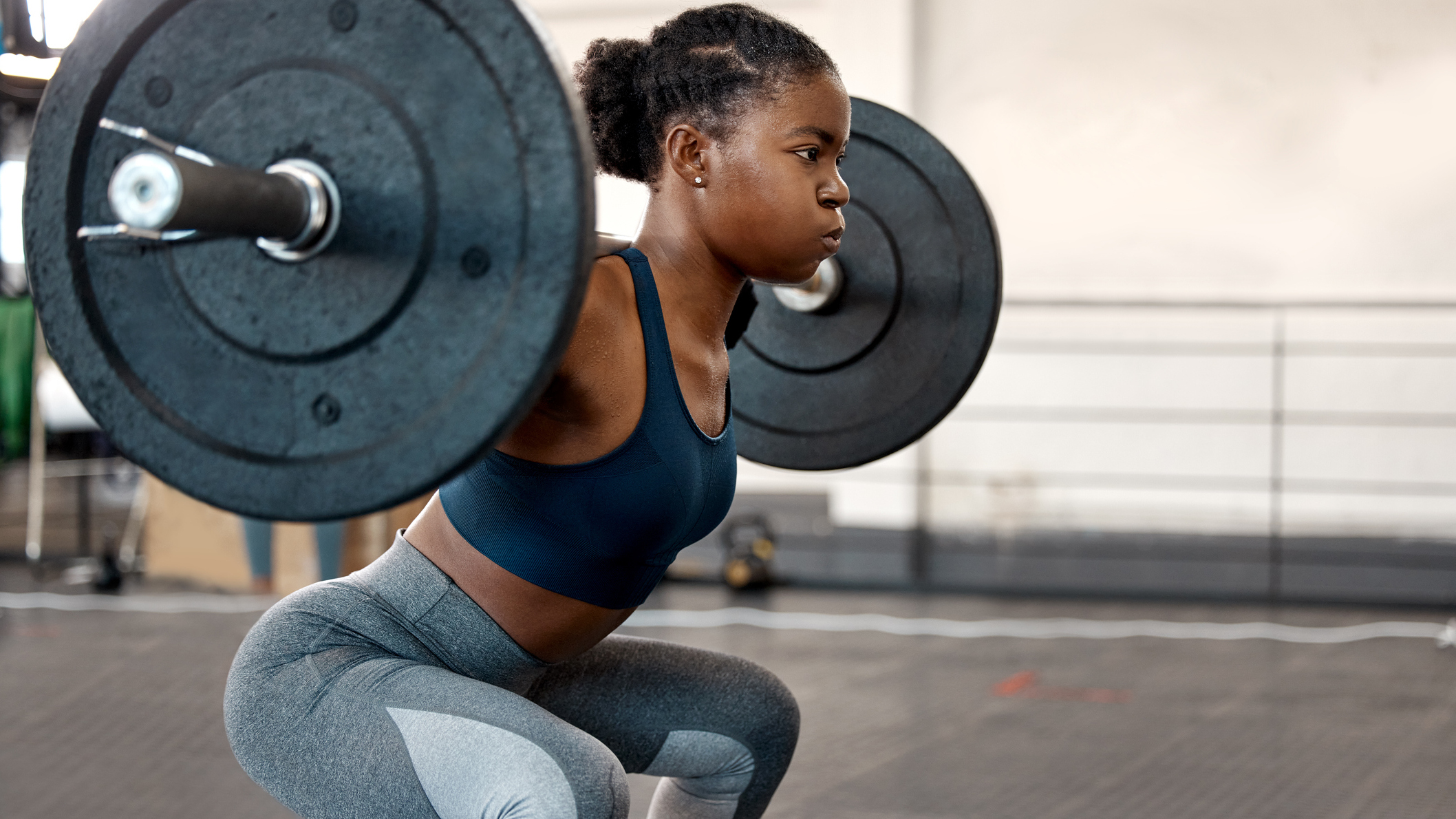
3. Push your elbows forwards
Try to push your elbows forwards before you start the lift. This may feel slightly uncomfortable but it will help you maintain a strong position when you move the weight. The reason it helps is because when your elbows point backward (as opposed to downwards), this encourages your shoulders to internally rotate and makes it harder to keep an upright neutral spine. Pushing your elbows forwards will also help you to engage your lats – your big back muscles—which will further stabilize your upper body.
4. Keep your knees in line with your toes
Plant your feet roughly shoulder-width apart with your toes turned out slightly at a “10 to two” position. Bend at the knees and hips simultaneously to lower your backside towards the ground and as you lower, keep your knees in line with your toes. It doesn’t matter if your knees go over your toes but you do want to avoid letting them turn inwards. You can spread your knees slightly at the base of the lift to open your hips and sit lower, then squeeze them back in to initiate the upwards movement.
5. Heels flat on the floor
Your weight should be on your heels and mid-foot throughout the lift. If you go onto the balls of your feet you’re in a weaker position that puts extra pressure on your knees. One reason people struggle to keep their heels down is because they have tight hamstrings, so stretch these muscles by squatting down with your back against a wall and hugging your knees to your chest. It doesn’t matter if your spine curves because, in this instance, you’re not carrying external load. The aim here is getting depth.
Barbell Squat Assistance Moves
Add these exercises to your workouts to target the key muscles involved in a back squat so you can lift more weight.
Front squat
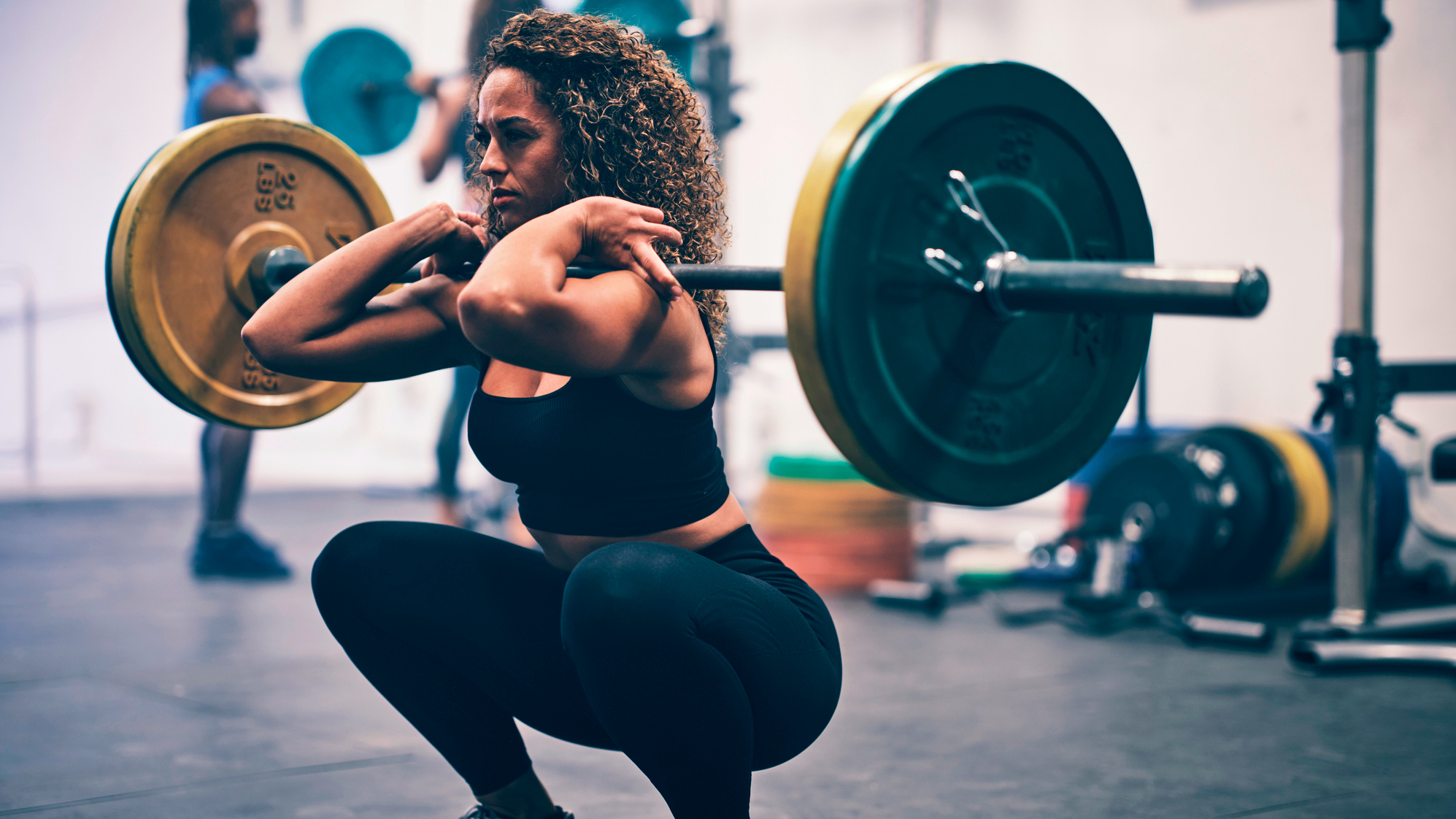
How Take the bar out of the rack with your hands crossed over your chest, supporting it across the front of your shoulders. Squat down, keeping your chest up, then drive up through your heels to stand.
Why The front squat focuses the effort on your quads (front thighs) and because the weight is in front of you it encourages you to keep your chest upright.
Goblet squat
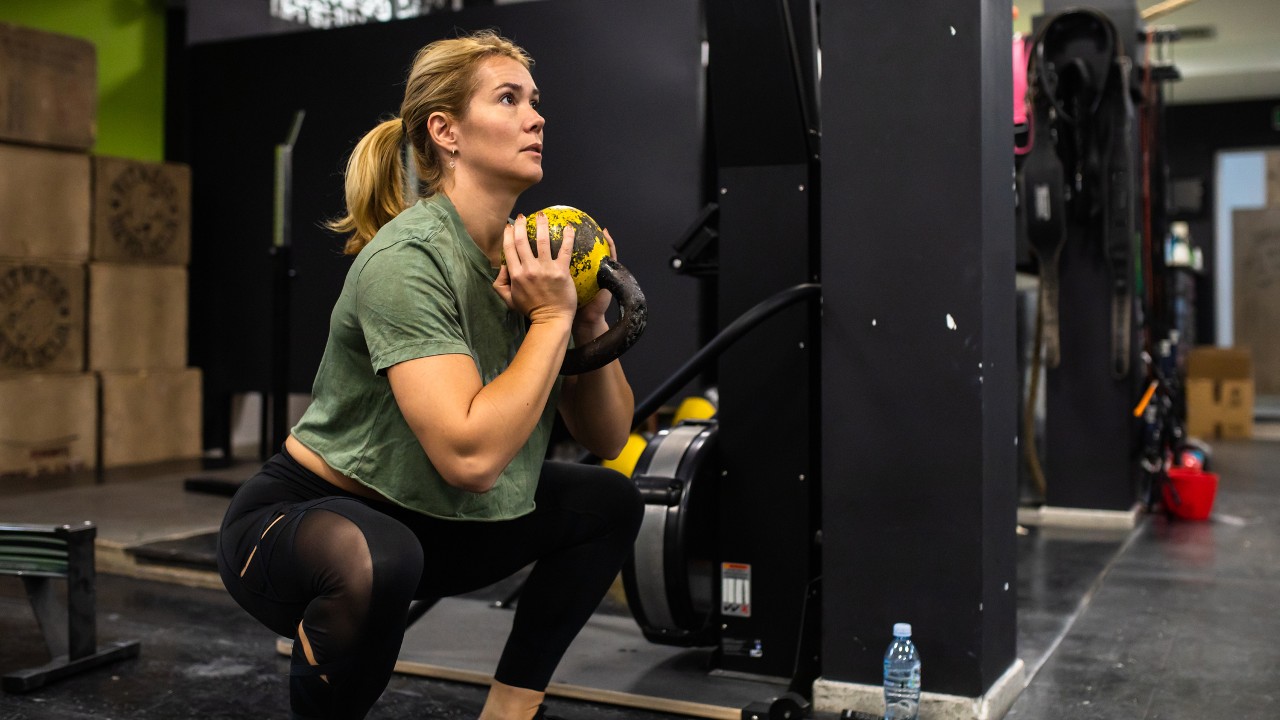
How Hold a kettlebell in both hands and squat down with your back straight and chest up. Descend until your elbows touch the insides of your knees, then put your weight on your heels as you stand back up.
Why This is ideal for beginners because it’s a relatively easy way of working on your depth. If you use a light weight you don’t have to worry too much about spine position and you can focus on getting as low as possible.
Split squat
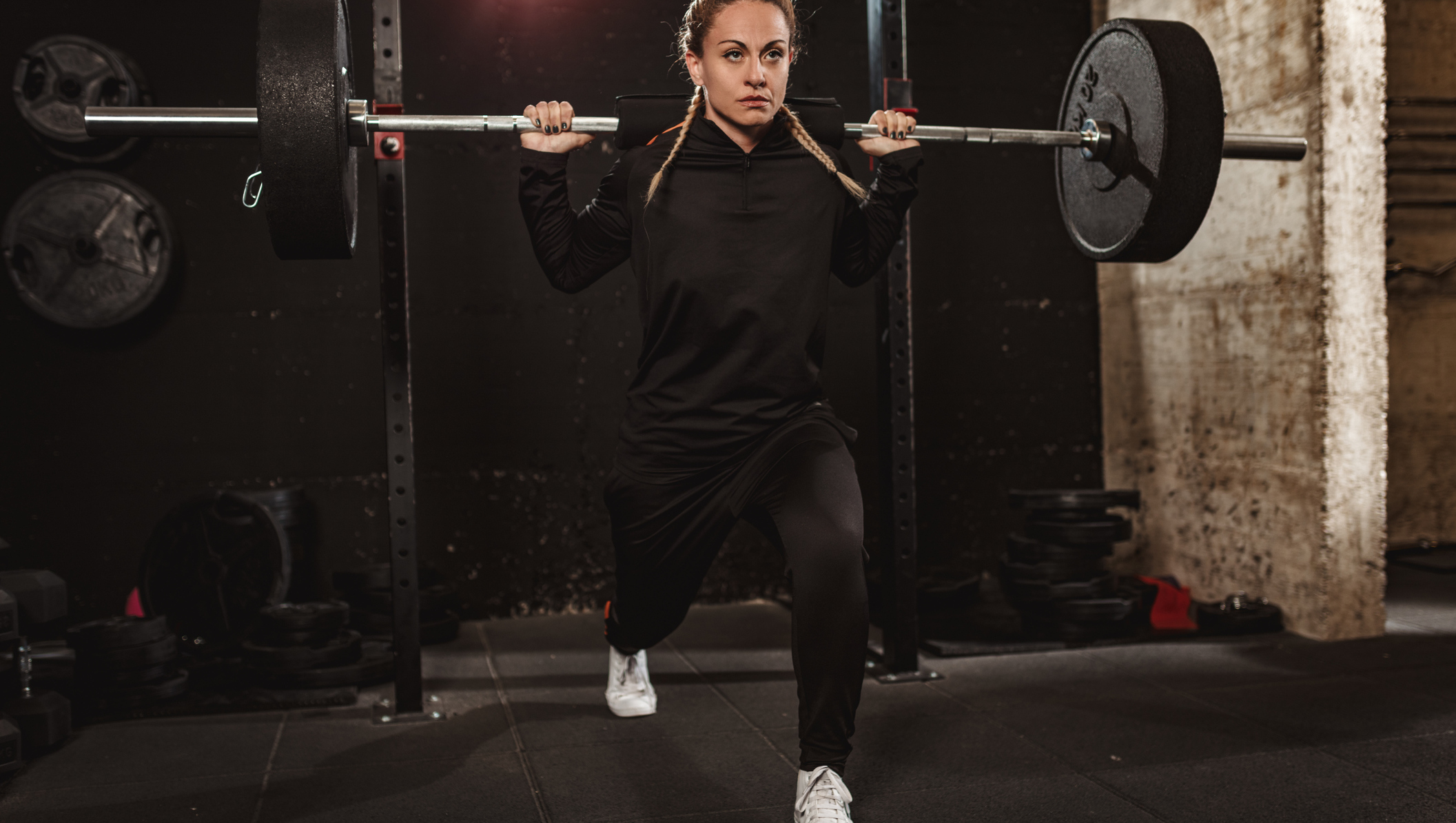
How Start in a split stance, with one foot in front of the other, holding a bar across the back of your shoulders. Bend both legs until your trailing knee touches the floor. Straighten both legs to return to the start, then go straight into the next rep.
Why Doing this move will ensure that you develop leg strength evenly because you work one side at a time.
Bulgarian split squat

How Start with your back foot on a bench with a dumbbell in each hand. Bend at the knee to lower towards the floor, keeping your torso upright, then press back up to the start. Do the same number of reps with each leg.
Why This variation of the squat will target your quads – a key muscle group involved in heavy squats. It also works your legs independently so that you become equally strong and stable on both sides.
How To Achieve A New Back Squat PR
Whatever your current lifting level, expert Tom Wright has advice that will push you on to a new back squat PB. Just find the bodyweight multiple you’re aiming for and use his gym wisdom to help you hit it
1 x Bodyweight
“As the first big benchmark in squatting, you want to get up to this as quickly as possible,” says Wright. “Adding a small amount of weight each week will help you to progress. When you hit a plateau, leave your ego in your locker for just one session and simply drop the weight by 10% for that week. This small deload will allow you to recover, adapt and push past your sticking point, enabling you to hit that bodyweight target.”
1.5 x Bodyweight
“As you approach this target, new factors come into play such as having a strong core,” says Wright. “Most people can piggyback one person but as soon as you throw another on they crumple from the middle. The strength you need comes from the abs and lower back, so make sure you train them. Pause squats will also help because static holds work the core hard to stabilise the body.”
2 x Bodyweight
“This really is the big time, and to play with the big boys and girls you need to think and train like them,” says Wright. “A structured training plan with calculated cycles is required because you’re working with marginal gains. Tried and tested programmes such as strength coach Jim Wendler’s 5-3-1 (jimwendler.com) help to build max strength because you train at levels that allow you to overload the muscle but recover sufficiently.”
Barbell Squat Challenge
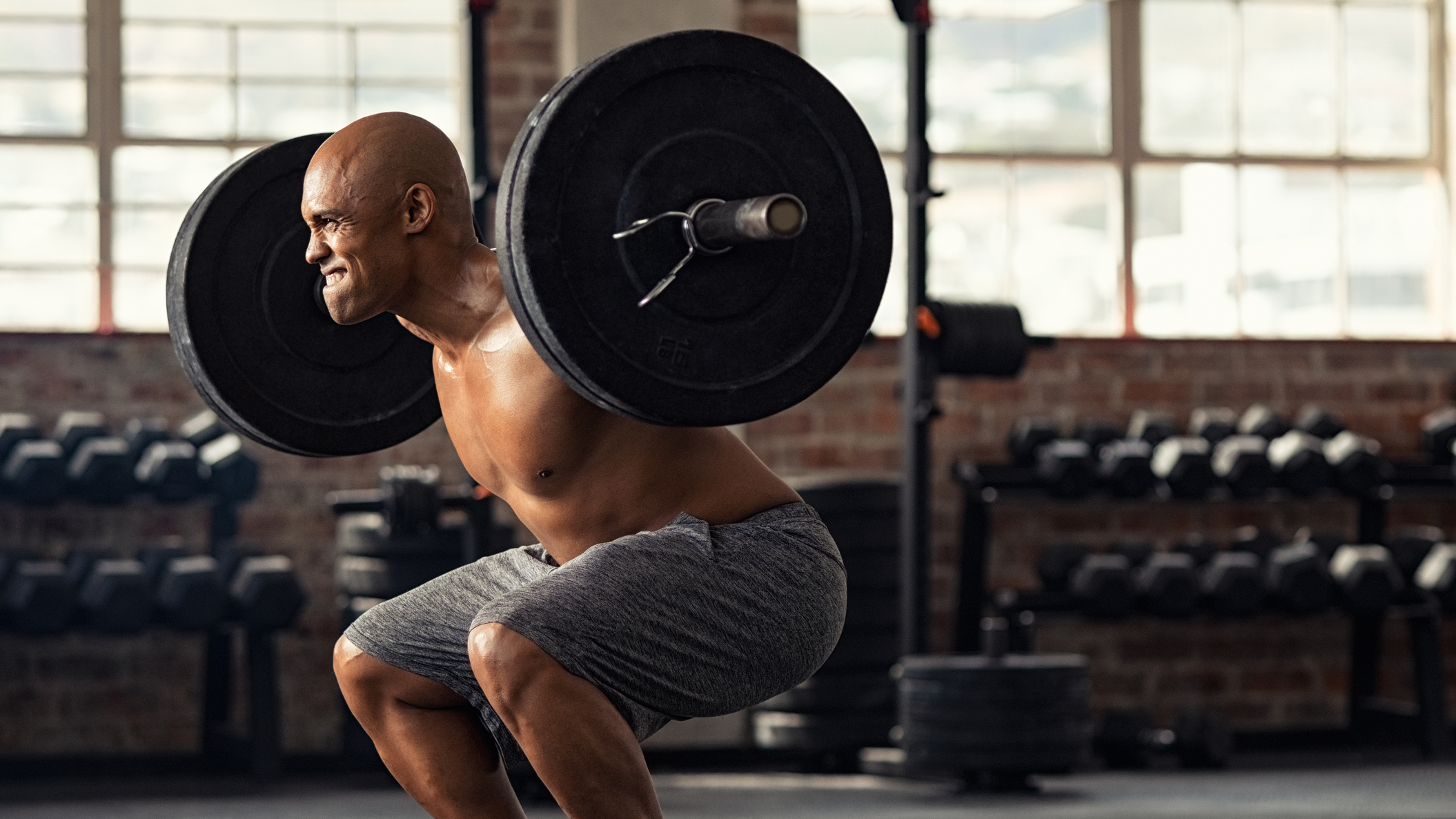
If you're in need of a squat-based test of mettle, may we suggest the bodyweight squat challenge? The rules are simple:
- Weigh yourself in kilograms. That number is the weight you want to be lifting. Load your bodyweight onto the barbell, preferably with it already in a squat rack at shoulder height and with the safety pins in to catch the bar if you fail at the bottom of the lift.
- Unrack the bar, taking the weight on your shoulders and stepping back from the rack so you’re in the top position of the squat.
- Do as many full rep squats as possible, “resting” in the top position of the squat if as and when you need but without re-racking the bar at any point.
- Once you’ve hit your limit and you can’t manage any more reps, set the bar down or re-rack it.
Standing with the bar on your back while you recover between reps isn’t just allowed, it’s encouraged. Pace yourself between reps—a good rule of thumb is to take one deep breath between reps for the first ten or so, then more breaths as necessary as the reps pile up. If you’re strong, you could end up spending five minutes with the bar unracked. A respectable total? 20 reps. A phenomenal total? 50.
If you’re going to take a serious run at the magic 50, you need to get used to high-rep squats. In week one, do one 20-rep set. In week two, do two. In week three, do three. In week four: go for it.

Joe Warner is a highly experienced journalist and editor who began working in fitness media in 2008. He has featured on the cover of Men’s Fitness UK twice and has co-authored Amazon best-sellers including 12-Week Body Plan. He was the editor of Men’s Fitness UK magazine between 2016 and 2019, when that title shared a website with Coach.
- Joel Snape
- Nick Harris-FrySenior writer
